预约演示
更新于:2025-06-14
Semaglutide (Shanxi Jiayuan)
司美格鲁肽(山西嘉源)
更新于:2025-06-14
概要
基本信息
药物类型 合成多肽 |
别名- |
靶点 |
作用方式 激动剂 |
作用机制 GLP-1R激动剂(胰高血糖素样肽-1激动剂) |
治疗领域- |
在研适应症- |
非在研适应症- |
原研机构 |
在研机构 |
非在研机构- |
权益机构- |
最高研发阶段临床申请 |
首次获批日期- |
最高研发阶段(中国)临床申请 |
特殊审评- |
登录后查看时间轴
关联
100 项与 司美格鲁肽(山西嘉源) 相关的临床结果
登录后查看更多信息
100 项与 司美格鲁肽(山西嘉源) 相关的转化医学
登录后查看更多信息
100 项与 司美格鲁肽(山西嘉源) 相关的专利(医药)
登录后查看更多信息
189
项与 司美格鲁肽(山西嘉源) 相关的文献(医药)2025-07-01·INTERNATIONAL JOURNAL OF CARDIOLOGY
Eligibility for and practical implications of semaglutide in overweight and obese patients with acute coronary syndrome, A letter to editor
Letter
作者: Malik, Ayesha Parvaiz ; Malik, Urooj Fatima
2025-06-01·AMERICAN JOURNAL OF OPHTHALMOLOGY
The Effect of Semaglutide and GLP-1 RAs on Risk of Nonarteritic Anterior Ischemic Optic Neuropathy
Article
作者: Talcott, Katherine E ; Allan, Kevin C ; Nahlawi, Raya ; Kaelber, David C ; Singh, Rishi P ; Shaia, Jacqueline K ; Abbass, Nadia J
PURPOSE:
The association between GLP-1 receptor agonists (GLP-1RA) and nonarteritic anterior ischemic optic neuropathy (NAION) remains unclear. Given the debilitating sequelae of NAION and rapid increase of GLP-1RA use, further research is essential to investigate this potential relationship. This study seeks to determine the risk of NAION and ischemic optic neuropathy (ION) in patients prescribed GLP-1RAs.
DESIGN:
Retrospective matched cohort study.
SETTING:
TriNetX United States collaborative network.
PARTICIPANTS:
Patients ≥12 years old with type 2 diabetes (T2DM) and considered overweight or obese (high BMI), with at least one ophthalmology or neurology visit. Among T2DM patients, approximately 120,000 patients with a semaglutide prescription and 220,000 prescribed any GLP-1RA were compared to matched T2DM controls. Among high BMI patients, approximately 58,000 on semaglutide and 66,000 on any GLP-1RA were compared to matched controls.
METHODS:
Patients prescribed semaglutide or any GLP-1RA were compared with those on non-GLP-1RA medications. Populations were propensity matched (1:1) on various demographic and risk factors to balance baseline cohorts.
MAIN OUTCOMES AND MEASURES:
Cumulative incidence and risk of NAION and ION. Risk ratios (RR) with 95% confidence intervals (CI) were reported, with significance defined as CI <0.9 or > 1.1.
RESULTS:
In T2DM patients prescribed semaglutide, the risk of NAION (RR = 0.7, 95% CI: 0.523-0.937) and ION (RR = 0.788, 95% CI: 0.609-1.102) after 5 years was not significantly increased compared to matched T2DM controls. Similarly, T2DM patients on any GLP-1RA demonstrated no significant difference in the risk of NAION (RR = 0.887, 95% CI: 0.735-1.071) or ION (RR = 0.969, 95% CI: 0.813-1.154) compared to controls. Furthermore, no increased risk of either outcome was found in the high BMI groups prescribed semaglutide or any GLP-1RA. The cumulative 5-year risk of NAION and ION in T2DM patients on semaglutide was 0.065% and 0.08%, respectively. In those with high BMI prescribed semaglutide, the risk of NAION and ION after 2 years was 0.038% and 0.404%, respectively.
CONCLUSIONS:
There was no significant increase in risk of NAION or ION in patients taking semaglutide or GLP-1RAs compared to T2DM or high BMI controls.
2025-04-01·BASIC & CLINICAL PHARMACOLOGY & TOXICOLOGY
Pregnancy Outcomes After Semaglutide Exposure
Article
作者: Pedersen, Lars Henning ; Henriksen, Jakob Nørgaard ; Ovesen, Per Glud ; Kolding, Line ; Sædder, Eva Aggerholm
5
项与 司美格鲁肽(山西嘉源) 相关的新闻(医药)2025-06-12
Breakthrough in AI-powered drug discovery validates HYFT™-driven peptide design, with broad potential across multiple therapeutic areas
AUSTIN, TX, USA I June 12, 2025 I
ImmunoPrecise Antibodies Ltd. (NASDAQ: IPA), a leader in AI-powered drug discovery and biotherapeutics, today announced compelling
in vitro
results demonstrating that its artificial intelligence (AI)-designed GLP-1 receptor agonist (GLP-1RA) peptide sequences achieve comparable or superior receptor activation to Semaglutide, a benchmark GLP-1 therapy and one of the most commercially successful drugs in the world. The
in vitro
analysis was conducted by an independent third party, further strengthening the objectivity and reliability of the findings.
The results validate the power of IPA’s LENSai™ platform and its proprietary HYFT™ technology, which enables first-principles-based
in silico
peptide discovery and optimization. Five rationally engineered peptide sequences—AI-optimized for improved stability and peptidase resistance—were tested against benchmark GLP-1 analogs in receptor activation assays. Two lead candidates outperformed or matched Semaglutide under controlled assay conditions.
Crucially, the sequences were not discovered by chance. They were designed using HYFT-derived intrinsic biological patterns—mathematical representations of functional relationships in biology—making this approach highly reproducible and generalizable to other drug targets.
With GLP-1 therapies representing one of the fastest-growing segments in the global pharmaceutical market, these results demonstrate that AI can now generate not only predictive but functionally validated peptide drugs, paving the way for rapid expansion into adjacent therapeutic areas using the same HYFT-driven approach.
“This is not a one-off success,” said Dr. Jennifer Bath, CEO of ImmunoPrecise. “We’ve demonstrated a scalable, first-principles mechanism to design potent, stable, and biologically active peptide therapeutics. HYFT-guided design unlocks repeatable workflows for other validated targets—whether in cardiometabolic disease, oncology, or infectious disease. It represents a foundational shift in how therapeutics are discovered. The same LENSai-driven approach has already transformed our vaccine and antibody discovery programs, and we are now applying that rinse-and-repeat methodology to metabolic diseases—starting with GLP-1.”
IPA is now considering two complementary preclinical paths for its lead GLP-1 candidates:
The sequences were also engineered for compatibility with next-generation expression systems, including nucleic acid-based vectors, which support scalable expression in both traditional and emerging human-relevant models, aligning with evolving regulatory interest in more predictive, flexible, and efficient therapeutic development approaches.
The significance of this breakthrough extends far beyond GLP-1. The same AI framework and HYFT-driven approach that generated these potent peptide drugs can now be applied to other high-value therapeutic targets—quickly, efficiently, and with built-in biological relevance.
This announcement follows IPA’s recent success with AI-designed dengue virus vaccine candidates, reinforcing the broad applicability of its technology across both infectious and non-infectious diseases.
About ImmunoPrecise Antibodies Ltd.
ImmunoPrecise (NASDAQ: IPA) is a global leader in AI-powered biotherapeutic discovery and development. Its proprietary HYFT™ technology and LENSai™ platform enable first-principles-based drug design, delivering validated therapeutic candidates across modalities and therapeutic areas. IPA partners with 19 of the top 20 pharmaceutical companies and is advancing next-generation biologics through data-driven, human-relevant models.
SOURCE:
ImmunoPrecise Antibodies
免疫疗法疫苗临床研究
2025-05-28
London: An inexpensive pill for treating HIV could become an alternative to injections for diabetic eye disease, a small study suggests.
"An oral drug that improves vision in diabetic macular edema (DME) would be a game changer because it would be more convenient for patients than frequent, often monthly, injections into the eye," study leader Dr. Jayakrishna Ambati of the University of Virginia said in a statement.
At the start of the study, 24 patients in Brazil with DME were randomly assigned to receive Viiv Healthcare's oral antiviral drug Epivir (lamivudine) or a placebo for four weeks, to be followed by a standard injection of Roche's Avastin (bevacizumab) into the clear gel-like area that fills the eye between the lens and retina.
After that initial four weeks, the ability to read letters on an eye chart had improved by 9.8 letters, or about 2 lines on the eye chart, in the lamivudine group, while it had decreased by 1.8 letters in the placebo group.
Four weeks after the Avastin injection, the lamivudine recipients had improved by 16.9 letters, more than 3 lines on the chart, while the group that got just Avastin improved by only 5.3 letters.
The HIV drug inhibits an early step in the inflammatory process that leads to DME, the researchers explained in a report published on Tuesday in the Cell Press journal Med.
That mechanism of action is different from existing treatments, "so we could also develop combination therapies," Ambati said.
While the results suggest that lamivudine may work both with and without Avastin injections, the Viiv drug alone could be life changing for patients in regions with limited access to specialty doctors or who are unable to afford or travel to monthly eye appointments, Ambati said.
"A $20-a-month or even cheaper oral pill that improves vision as much as or more than therapy with injections into the eye that cost up to $2,000 per month could be transformative both for patients and the healthcare system," Ambati said.
WORKING TOWARD NAUSEA-FREE GLP-1 DRUGS
Researchers have come a step closer to designing GLP-1 drugs for weight loss that don't cause nausea, according to a report in Cell Metabolism.
In experiments in mice with the GLP-1 drug semaglutide - the main ingredient in Novo Nordisk's weight-loss drug Wegovy - the researchers identified the nerve cells in the brain stem that control the medicine's effects on appetite and weight and distinguished those from brain cells that contribute to the nausea.
After determining which nerve cells were activated by the drug, they next found a way to stimulate these cells without administering the drug itself.
The result was that the mice ate less and lost weight, just as they did when treated with semaglutide, but without nausea-related behavior.
"This suggests that these nerve cells control the beneficial effects of semaglutide," study leader Julia Teixidor-Deulofeu, a PhD student at Sahlgrenska Academy at the University of Gothenburg, said in a statement.
"If we can target the treatment there, we may be able to maintain the positive effects while reducing side effects."
FOR SECOND LOOK AT DENSE BREASTS, MRI TOPS ULTRASOUND
When mammography is negative in women with dense breasts, MRI is superior to ultrasound for double-checking that no early-stage cancers have been missed, researchers reported in The Lancet.
Women with dense breasts face increased risks of breast cancer, but mammograms are less effective for detecting early-stage cancer in these individuals because the dense tissue can hide tumors, the researchers explain.
Doctors often advise them to follow a negative mammogram with an MRI or ultrasound exam, but it has not been clear whether one is better than the other for this purpose.
More than 9,000 UK women with dense breasts and a negative mammogram, ages 50 to 70, were randomly assigned to undergo various supplemental screening techniques. The cancer detection rate was 0.4% with ultrasound, 1.7% with MRI, and 1.9 per cent with mammography using an intravenous dye.
The authors acknowledge that while the scans can detect additional small cancers, it's not clear whether finding those early tumors will reduce the number of deaths due to breast cancer.
Further study is needed to establish the risk of over-diagnosis and to estimate the cost-benefit ratio of implementing a supplemental imaging strategy for breast cancer screening, they said.
(Reporting by Nancy Lapid; editing by Bill Berkrot)

临床结果
2025-05-28
--Phase 2b QUALITY clinical study topline safety data shows that the enobosarm + semaglutide combination had a positive safety profile compared to semaglutide alone--
--Based on Phase 2b QUALITY trial efficacy and safety data, enobosarm 3mg will advance as the proposed oral dose for the Phase 3 clinical program--
--
Enobosarm 3mg + semaglutide combination had the added benefit of fewer gastrointestinal side effects (Diarrhea, Nausea, and GERD) compared to semaglutide alone--
--
Enobosarm 3mg added to semaglutide resulted in the highly selective loss of fat mass, accounting for 99% of the total weight lost, while preserving lean mass
--
--With this positive Phase 2b QUALITY study, Veru has requested an End of Phase 2 meeting with FDA to provide regulatory clarity on the Phase 3 clinical program--
--The topline efficacy and safety data for the Phase 2b extension maintenance study to assess whether enobosarm monotherapy prevents the fat and weight regain following discontinuation of semaglutide are expected in the second quarter--
MIAMI, FL, May 28, 2025 (GLOBE NEWSWIRE) -- Veru Inc. (NASDAQ: VERU), a late clinical stage biopharmaceutical company focused on developing innovative medicines for the treatment of cardiometabolic and inflammatory diseases, today announced positive topline safety results from the Phase 2b QUALITY clinical study, a multicenter, double-blind, placebo-controlled, randomized, dose-finding clinical trial, designed to evaluate the safety and efficacy of enobosarm 3mg, enobosarm 6mg, or placebo as a treatment to enhance fat loss and to prevent muscle loss in older patients (≥60 years of age) receiving semaglutide (Wegovy
®
) for chronic weight management.
Positive Topline Safety Results for the Phase 2b QUALITY Clinical Trial
Adverse events (AEs) and adverse events of special Interest (see table below).
In the Phase 2b QUALITY clinical trial, enobosarm and semaglutide GLP-1 RA combination had a positive safety profile. There were no increases in gastrointestinal side effects, no evidence of drug-induced liver injury (as defined by Hy’s law), and no increases in obstructive sleep apnea at any dose of enobosarm compared to placebo (semaglutide alone). There were no AEs of increases in prostate specific antigen in men. There were no AEs related to masculinization in women. There were no reports of suicidal ideation observed (Columbia-Suicide Severity Rating Scale). No treatment related serious adverse events (SAEs) were observed in the QUALITY study. There were 4 non-treatment related SAEs equally distributed between the treatment groups.
At the proposed Phase 3 clinical program dose of enobosarm 3mg, one subject experienced an adverse event of transient, mild increase in alanine aminotransferase (ALT), which returned to baseline while remaining on enobosarm. There were no accompanying increases in aspartate aminotransferase (AST), alkaline phosphatase or total bilirubin. The enobosarm 3mg + semaglutide group had the added benefit of fewer AEs reported for certain gastrointestinal side effects (Diarrhea, Nausea, and Gastroesophageal Reflux Disease) compared to placebo + semaglutide.
“The safety results from the Phase 2b study are positive and suggest that the addition of enobosarm to semaglutide treatment doesn’t worsen, and in some cases appears to improve gastrointestinal side effects”, said Louis J. Aronne, MD, an obesity expert, past president of the Obesity Society and a scientific advisor and consultant to Veru.
Topline Phase 2b QUALITY clinical trial safety summary:
Adverse Events
1
and Adverse Events of Special Interest
Placebo
+Semaglutide
n=56
Enobosarm 3mg
+Semaglutide
n=56
Enobosarm 6mg
+Semaglutide
n=56
Nausea
11 (20%)
6 (11%)
8 (14%)
Gastroesophageal Reflux Disease (GERD)
7 (13%)
3 (5%)
0 (0%)
Diarrhea
4 (7%)
1 (2%)
7 (13%)
Vomiting
2 (4%)
1 (2%)
4 (7%)
Constipation
8 (14%)
7 (13%)
6 (11%)
Alanine aminotransferase (ALT) increased
0 (0%)
1 (2%)
2
6 (11%)
3
Aspartate aminotransferase (AST) increased
0 (0%)
0 (0%)
1 (2%)
3
Obstructive sleep apnea syndrome
9 (16%)
10 (18%)
11 (20%)
Upper respiratory tract infection
1 (2%)
1 (2%)
4 (7%)
Headache
2 (4%)
4 (7%)
1 (2%)
Fatigue
2 (4%)
0 (0%)
4 (7%)
1
Adverse events (at least 4 subjects in any dose group) from Day 1 to Day 112
2
Graded as mild in severity, levels returned to below baseline while on drug, no associated increase in alkaline phosphatase or total bilirubin
3
All graded as mild in severity, all returned to or toward baseline/upper limit of normal, no associated increases in alkaline phosphatase or total bilirubin
“We previously shared positive results from the Phase 2b QUALITY study, indicating that enobosarm can selectively enhance fat loss while preserving lean mass and physical function in older patients using semaglutide for weight loss. Today, we announced that the topline safety data from the Phase 2b QUALITY clinical study confirms that enobosarm has a positive safety profile with the added benefit of reducing certain gastrointestinal side effects that patients commonly experience with semaglutide and other GLP-1 receptor agonists. Based on these efficacy and safety results, the enobosarm 3mg dose has been selected to advance into our proposed Phase 3 study,” said Mitchell Steiner, M.D., Chairman, President, and Chief Executive Officer of Veru. “We have submitted a request for an End of Phase 2 meeting with FDA, which we anticipate will take place in the third quarter of calendar year 2025. The meeting is expected to provide regulatory clarity on the design of our planned Phase 3 clinical program. Further, we are expecting the topline efficacy and safety results for the Phase 2b extension maintenance study this quarter, which will show us whether enobosarm monotherapy can stop the fat and weight regain that generally happens when patients discontinue GLP-1 receptor agonist treatment. Finally, we look forward to reporting the full Phase 2b QUALITY and extension clinical trial efficacy and safety data at future leading scientific conferences and in prestigious publications.”
Positive Topline Efficacy Results for the Phase 2b QUALITY Clinical Study: Enobosarm in Combination with GLP-1 RA Drugs Makes Weight Reduction More Tissue Selective for Fat Loss While Preserving Lean Mass and Physical Function
In January 2025, the Company announced positive topline results from the Phase 2b QUALITY clinical study, which is a multicenter, double-blind, placebo-controlled, randomized, dose-finding clinical trial designed to evaluate the safety and efficacy of enobosarm 3mg, enobosarm 6mg, or placebo as a treatment to augment fat loss and to prevent muscle loss in older patients (≥60 years of age) receiving semaglutide (Wegovy
®
) for chronic weight management.
Topline Efficacy Results
Topline Primary Endpoint – Percent Change in Total Lean Mass
In the topline efficacy analysis, the trial met its prespecified primary endpoint with a statistically significant and a clinically meaningful benefit in all patients receiving enobosarm + semaglutide versus placebo + semaglutide at 16 weeks in total lean mass (71% relative reduction in lean mass loss, p=0.002). Notably, the enobosarm 3mg + semaglutide was the best dose with a 99.1% mean relative reduction in loss of lean mass (p <0.001). The enobosarm 6mg + semaglutide dose did not provide any additional benefit over the 3mg dose in preserving lean mass.
Topline Secondary Endpoints:
Total Fat Mass
Enobosarm + semaglutide treatment resulted in dose dependent greater loss of fat mass compared to placebo + semaglutide with the enobosarm 6mg dose having a 46% greater relative loss of fat mass compared to placebo + semaglutide group at 16 weeks (p=0.014).
Weight Loss and Tissue Composition of Weight Loss
Although mean weight loss by DEXA was similar in the enobosarm + semaglutide groups compared to semaglutide alone at 16 weeks, the composition of total weight loss shifted toward greater and more selective fat loss with enobosarm treatment:
In the placebo + semaglutide group, the median percentage of total body weight loss due to lean mass was 32%, and estimated fat loss was 68%.
In the enobosarm 3mg + semaglutide group, the median percentage of total body weight loss due to lean mass was 0.9%, and estimated fat loss was 99.1%.
Physical Function Measured by the Stair Climb Test
The Stair Climb Test is used to measure physical function and is an activity of daily living that measures functional muscle strength, balance and agility. Decline in Stair Climb Test performance in older adults is predictive of increased risk for mobility disabilities, gait difficulties, falls, bone fractures, hospitalizations, and mortality. As a reference point, stair climb power declines by -1.38% per year with aging according to
Van Roie E, et al. PLOS ONE.14:e0210653, 2019.
Stair Climb Test Results:
A responder analysis was conducted using a greater than 10% decline in stair climb power at 16 weeks as the cutoff, which corresponds to approximately 7.5 years’ worth of stair climb power loss due to natural aging.
In the placebo + semaglutide group, 42.6% of patients experienced at least a 10% decline in stair climb power at 16 weeks.
In the enobosarm 3mg + semaglutide group, only 16% of patients had at least a 10% decline in stair climb power at 16 weeks, representing a 62.4% relative reduction of patients with a ≥10% decline in power compared to the placebo + semaglutide group (p=0.0066).
In the enobosarm 6mg + semaglutide group, only 22.5% of patients had at least a 10% decline in stair climb power at 16 weeks, representing a 46.2% relative reduction of patients with a ≥10% decline on power compared to the placebo + semaglutide group (p=0.0505).
Topline Efficacy Results Conclusion
The Phase 2b QUALITY clinical trial is the first human study to show that older patients who are overweight or have obesity and receiving semaglutide, a GLP-1 receptor agonist, are at higher risk for accelerated loss of lean mass and associated physical function decline. Enobosarm added to semaglutide enhanced loss of fat, with 99% of the total weight loss attributable to fat. In addition, enobosarm treatment preserved lean muscle mass, which translated into an improvement in physical function as measured by the Stair Climb Test compared to semaglutide alone. Enobosarm represents a novel drug that improves body composition by driving a more selective and greater loss of adiposity (fat mass) and preserving both lean mass and physical function in patients receiving semaglutide for chronic weight management.
Phase 2b Extension Maintenance Study
After completing the efficacy dose-finding portion of the Phase 2b QUALITY clinical trial, participants continued into a Phase 2b extension study where all patients discontinued semaglutide treatment, but continued receiving placebo, enobosarm 3mg, or enobosarm 6mg as monotherapy in a blinded fashion for 12 weeks. The Phase 2b extension clinical trial is evaluating whether enobosarm, by preserving muscle mass, also prevents the fat regain that generally occurs after stopping a GLP-1 RA. The topline efficacy and safety results for the Phase 2b extension clinical study are expected this quarter.
Regulatory Next Steps
As the Phase 2b QUALITY clinical trial is a positive study, we have requested an End of Phase 2 meeting with the FDA. During the preIND FDA meeting, FDA provided general comments about a regulatory path forward for enobosarm as a drug that improves body composition during weight loss including input on the Phase 3 clinical program design.
As a path forward, we plan to propose a Phase 3 clinical program that is similar to the positive Phase 2b QUALITY clinical trial. The proposed Phase 3 clinical trial design is a double-blind, placebo-controlled study in older patients (≥60 years of age) who have obesity or who are overweight and who are eligible for treatment with GLP-1 RA. The GLP-1 RA may be either Wegovy
®
(semaglutide) and/or Zepbound® (tirzepatide). Patients will be randomized to oral daily enobosarm or matching placebo. All subjects will start and receive GLP-1 RA during the study. The proposed primary objective will be the effect of enobosarm on physical function measured by the Stair Climb Test at 24 weeks. Proposed key secondary objectives will be to assess the effect of enobosarm on total lean mass, total fat mass, insulin resistance, and hemoglobin A1c at 24 weeks.
After the Phase 3 clinical trial ends at 24 weeks of treatment, the plan is to continue to measure total lean mass, total body weight, stair climb power physical function, total fat mass, bone mineral density, insulin resistance, and hemoglobin A1c up to 68 weeks to capture the longer-term benefits of enobosarm improvements on body composition for greater loss of adiposity or fat, weight reduction, and preservation of both lean mass and bone.
Novel Modified Release Oral Enobosarm Formulation is on Track to be Available for Phase 3 Clinical Studies and Commercialization
Veru is currently developing a novel, patentable, modified release oral formulation for enobosarm. The actual formulation, pharmacokinetic release profile(s), and method of manufacturing will be the subjects of future patent applications. If issued, the expiry for the new modified release oral enobosarm formulation patent is expected to be 2045. The new enobosarm formulation has completed animal trials and is anticipated to be in Phase 1 bioavailability clinical trials during the first half of calendar 2025. The expectation is that this novel modified release oral enobosarm formulation will be available for the Phase 3 clinical studies and for commercialization.
Forward-Looking Statements
This press release contains "forward-looking statements" as that term is defined in the Private Securities Litigation Reform Act of 1995, including, without limitation, express or implied statements related to whether and when the full data set, including safety data, from the Phase 2b QUALITY study of enobosarm discussed above will be made available and whether that data will align with disclosed topline results or change any of the conclusions drawn from the topline data; whether and when the Company will present the full data from the Phase 2b QUALITY study and in what forum; whether and when the Company will present data from the extension maintenance study and whether such extension study will successfully meet any of its endpoints; whether and when the Company will have an end-of-Phase-2 meeting with FDA and the results of any such meeting; whether the results of the Phase 2b QUALITY study of enobosarm will be replicated to the same or any degree in any future Phase 3 studies; the expected costs, timing, patient population, design, endpoints and results of the planned Phase 3 studies of enobosarm as a body composition drug or any other Phase 3 studies; whether the Company and FDA will align on the Phase 3 program for enobosarm as a body composition drug and whether any such program will be able to be funded by the Company; whether the modified-released formation of enobosarm will be developed successfully and whether such formulation will have the same effectiveness as the current formulation, and whether and when such modified-release formulation will be available for any planned or future clinical studies; whether and when any patents will actually issue regarding such modified-release formulation and what any expiration dates of any such patents might be; whether the Company will be able to obtain sufficient GLP-1 RA drugs in a timely or cost-effective manner in the planned Phase 3 study or other Phase 3 studies; whether FDA will require more than one Phase 3 study for enobosarm as a body composition drug; whether enobosarm will enhance weight loss or preserve muscle in, or meet any unmet need for, obesity patients and whether it will enhance weight loss in any planned or other Phase 3 studies or if approved, in clinical practice; whether patients treated with enobosarm for a longer period of time than in the Phase 2b QUALITY study will have a greater loss of adiposity or greater weight loss than with semaglutide alone; and whether and when enobosarm will be approved by the FDA as a body composition drug. The words "anticipate," "believe," "could," "expect," "intend," "may," "opportunity," "plan," "predict," "potential," "estimate," "should," "will," "would" and similar expressions are intended to identify forward-looking statements, although not all forward-looking statements contain these identifying words. Any forward-looking statements in this press release are based upon current plans and strategies of the Company and reflect the Company's current assessment of the risks and uncertainties related to its business and are made as of the date of this press release. The Company assumes no obligation to update any forward-looking statements contained in this press release because of new information or future events, developments or circumstances. Such forward-looking statements are subject to known and unknown risks, uncertainties and assumptions, and if any such risks or uncertainties materialize or if any of the assumptions prove incorrect, our actual results could differ materially from those expressed or implied by such statements. Factors that may cause actual results to differ materially from those contemplated by such forward-looking statements include, but are not limited to: the development of the Company’s product portfolio and the results of clinical studies possibly being unsuccessful or insufficient to meet applicable regulatory standards or warrant continued development; the Company’s ability to reach agreement with FDA on study design requirements for the Company’s planned clinical studies, including for the Phase 3 program for enobosarm as a body composition drug and the number of Phase 3 studies to be required and the cost thereof; potential delays in the timing of and results from clinical trials and studies, including as a result of an inability to enroll sufficient numbers of subjects in clinical studies or an inability to enroll subjects in accordance with planned schedules; the ability to fund planned clinical development as well as other operations of the Company; the timing of any submission to the FDA or any other regulatory authority and any determinations made by the FDA or any other regulatory authority; the potential for disruptions at the FDA or other government agencies to negatively affect our business; any products of the Company, if approved, possibly not being commercially successful; the ability of the Company to obtain sufficient financing on acceptable terms when needed to fund development and operations; demand for, market acceptance of, and competition against any of the Company’s products or product candidates; new or existing competitors with greater resources and capabilities and new competitive product approvals and/or introductions; changes in regulatory practices or policies or government-driven healthcare reform efforts, including pricing pressures and insurance coverage and reimbursement changes; the Company’s ability to protect and enforce its intellectual property; costs and other effects of litigation, including product liability claims and securities litigation; the Company’s ability to identify, successfully negotiate and complete suitable acquisitions or other strategic initiatives; the Company’s ability to successfully integrate acquired businesses, technologies or products; and other risks detailed from time to time in the Company’s press releases, shareholder communications and Securities and Exchange Commission filings, including the Company's Form 10-K for the year ended September 30, 2024, and subsequent quarterly reports on Form 10-Q. These documents are available on the “SEC Filings” section of our website at
www.verupharma.com/investors
.
Wegovy® is a registered trademark of Novo Nordisk A/S.
Zepbound® is a registered trademark of Eli Lilly and Company.
Investor and Media Contact:
Samuel Fisch
Executive Director, Investor Relations and Corporate Communications
Email:
veruinvestor@verupharma.com
Legal Disclaimer:
EIN Presswire provides this news content "as is" without warranty of any kind. We do not accept any responsibility or liability
for the accuracy, content, images, videos, licenses, completeness, legality, or reliability of the information contained in this
article. If you have any complaints or copyright issues related to this article, kindly contact the author above.

临床2期临床结果临床3期
100 项与 司美格鲁肽(山西嘉源) 相关的药物交易
登录后查看更多信息
研发状态
登录后查看更多信息
临床结果
临床结果
适应症
分期
评价
查看全部结果
| 研究 | 分期 | 人群特征 | 评价人数 | 分组 | 结果 | 评价 | 发布日期 |
|---|
No Data | |||||||
登录后查看更多信息
转化医学
使用我们的转化医学数据加速您的研究。
登录
或
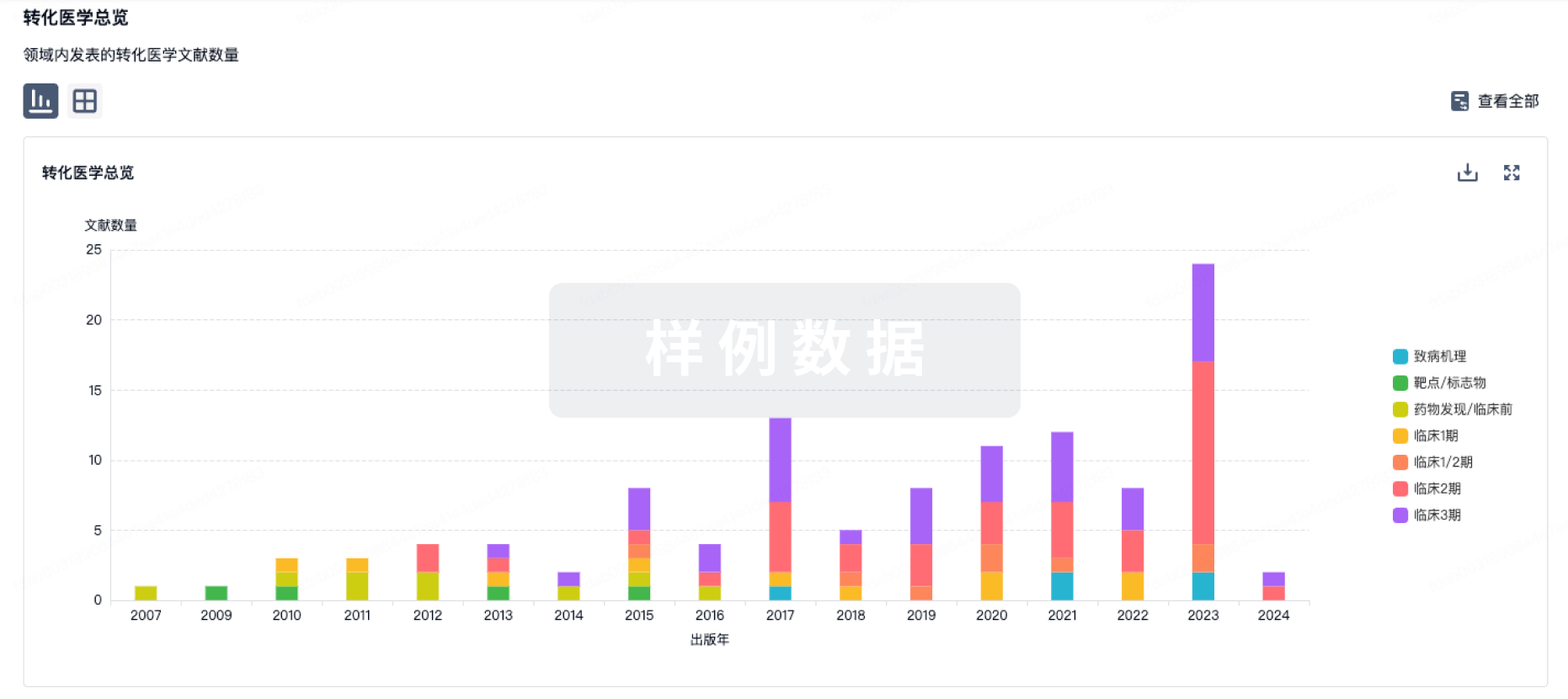
药物交易
使用我们的药物交易数据加速您的研究。
登录
或
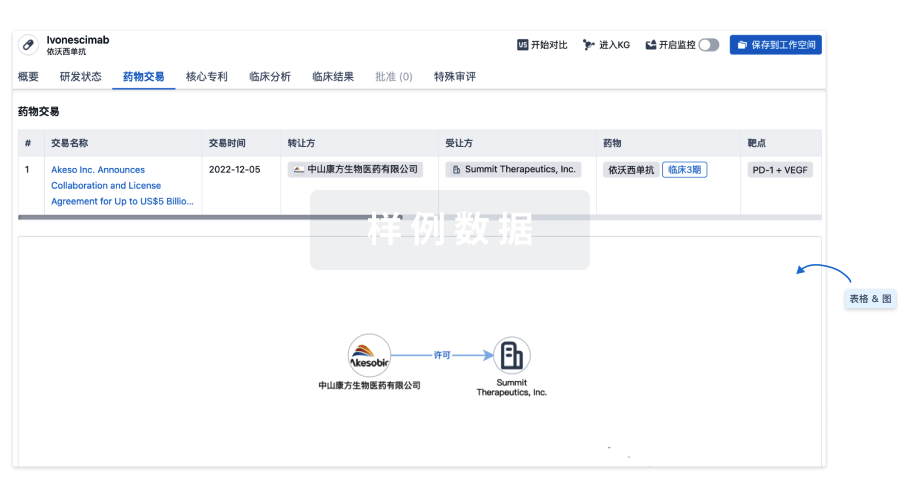
核心专利
使用我们的核心专利数据促进您的研究。
登录
或
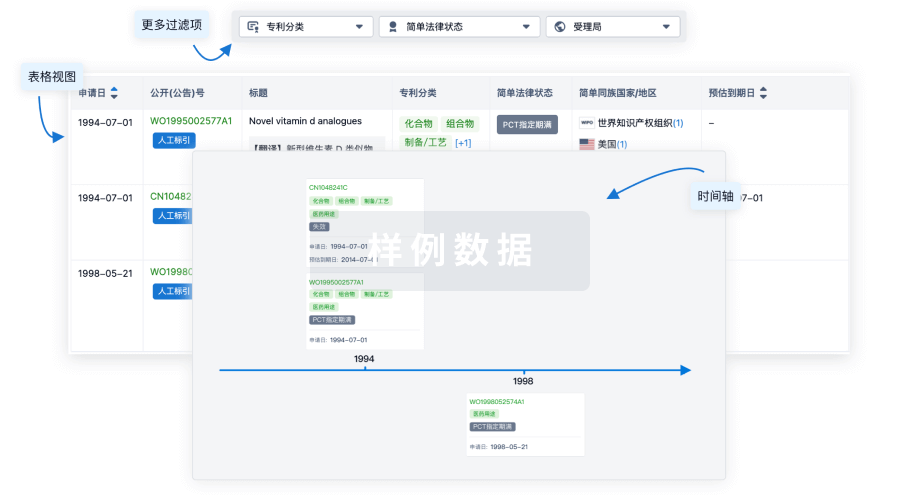
临床分析
紧跟全球注册中心的最新临床试验。
登录
或
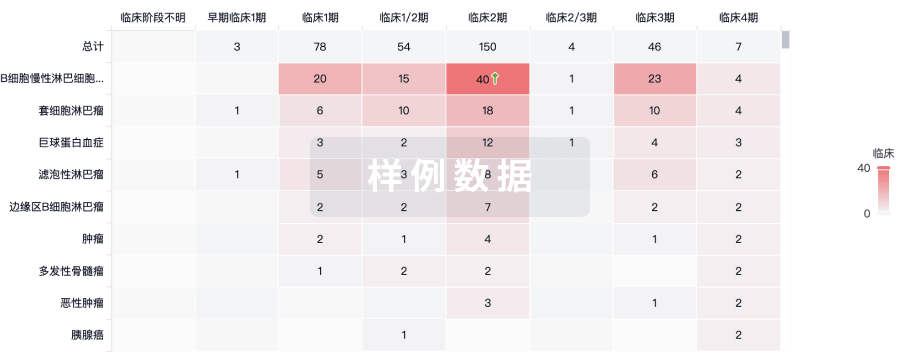
批准
利用最新的监管批准信息加速您的研究。
登录
或

生物类似药
生物类似药在不同国家/地区的竞争态势。请注意临床1/2期并入临床2期,临床2/3期并入临床3期
登录
或
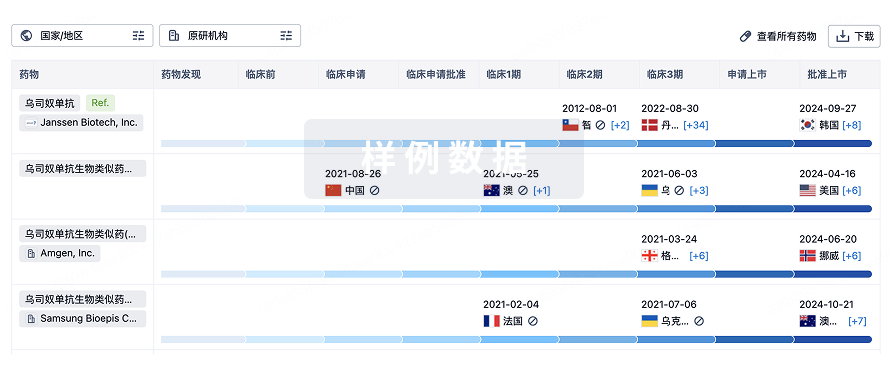
特殊审评
只需点击几下即可了解关键药物信息。
登录
或

Eureka LS:
全新生物医药AI Agent 覆盖科研全链路,让突破性发现快人一步
立即开始免费试用!
智慧芽新药情报库是智慧芽专为生命科学人士构建的基于AI的创新药情报平台,助您全方位提升您的研发与决策效率。
立即开始数据试用!
智慧芽新药库数据也通过智慧芽数据服务平台,以API或者数据包形式对外开放,助您更加充分利用智慧芽新药情报信息。
生物序列数据库
生物药研发创新
免费使用
化学结构数据库
小分子化药研发创新
免费使用
